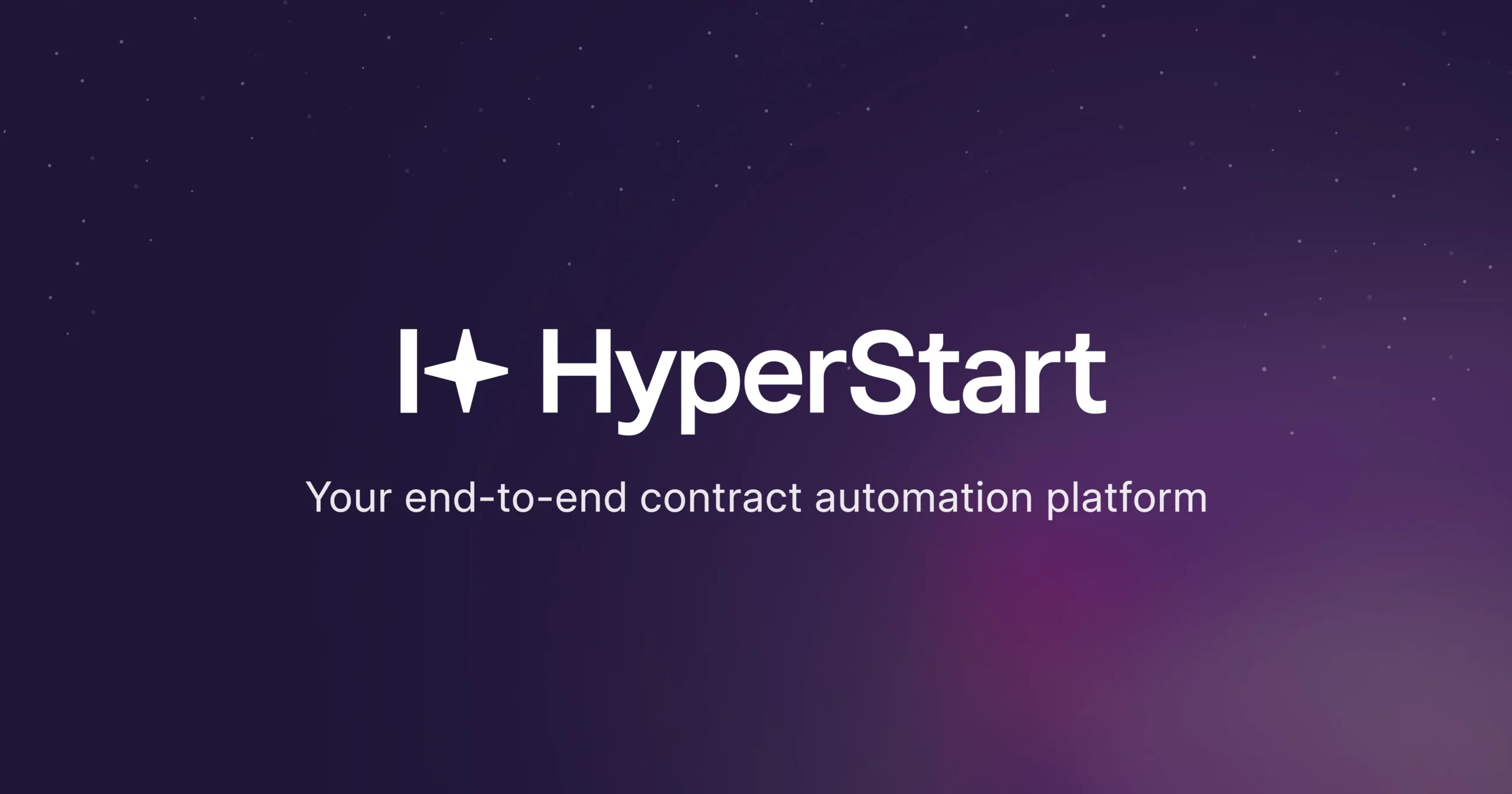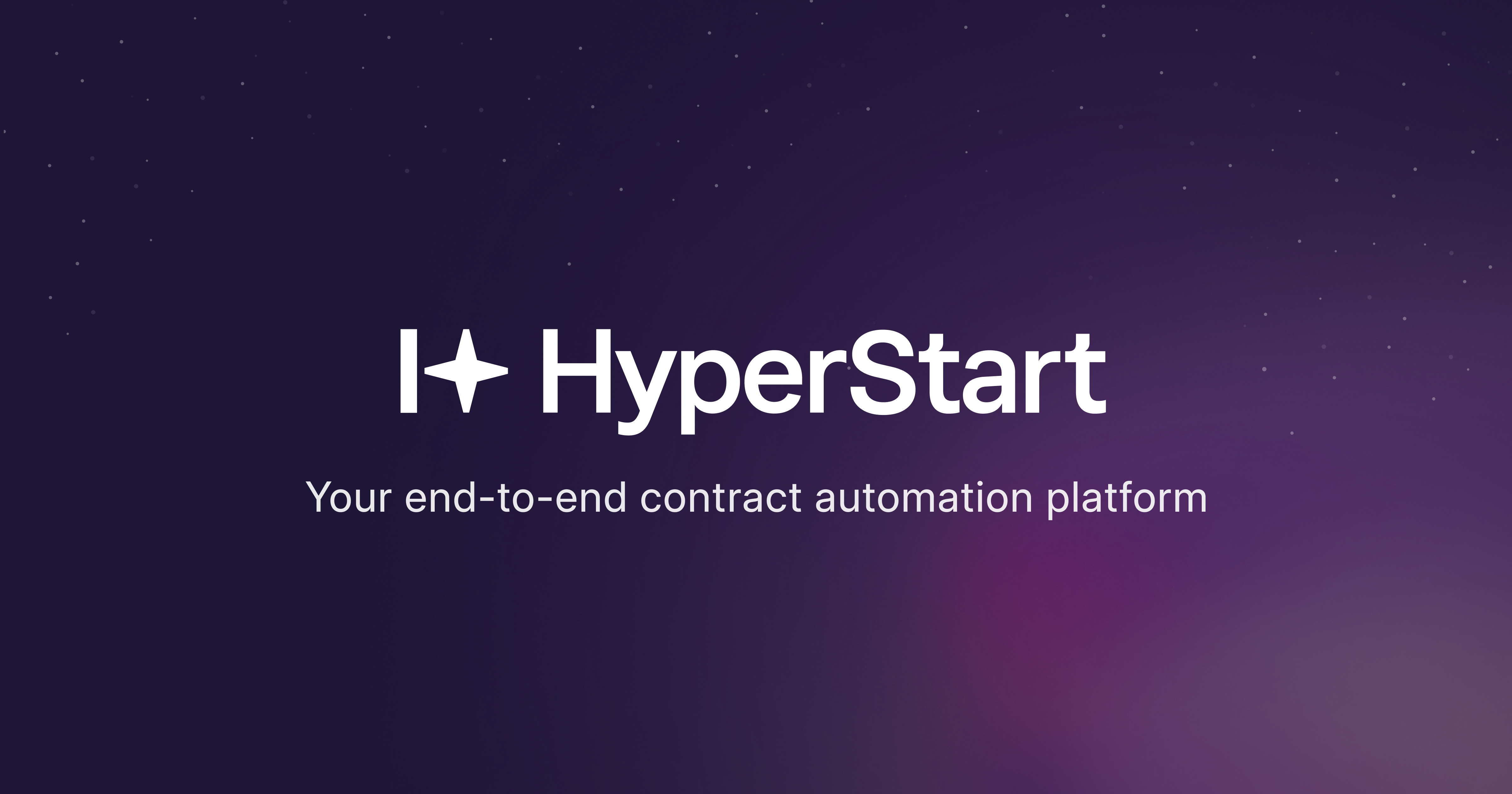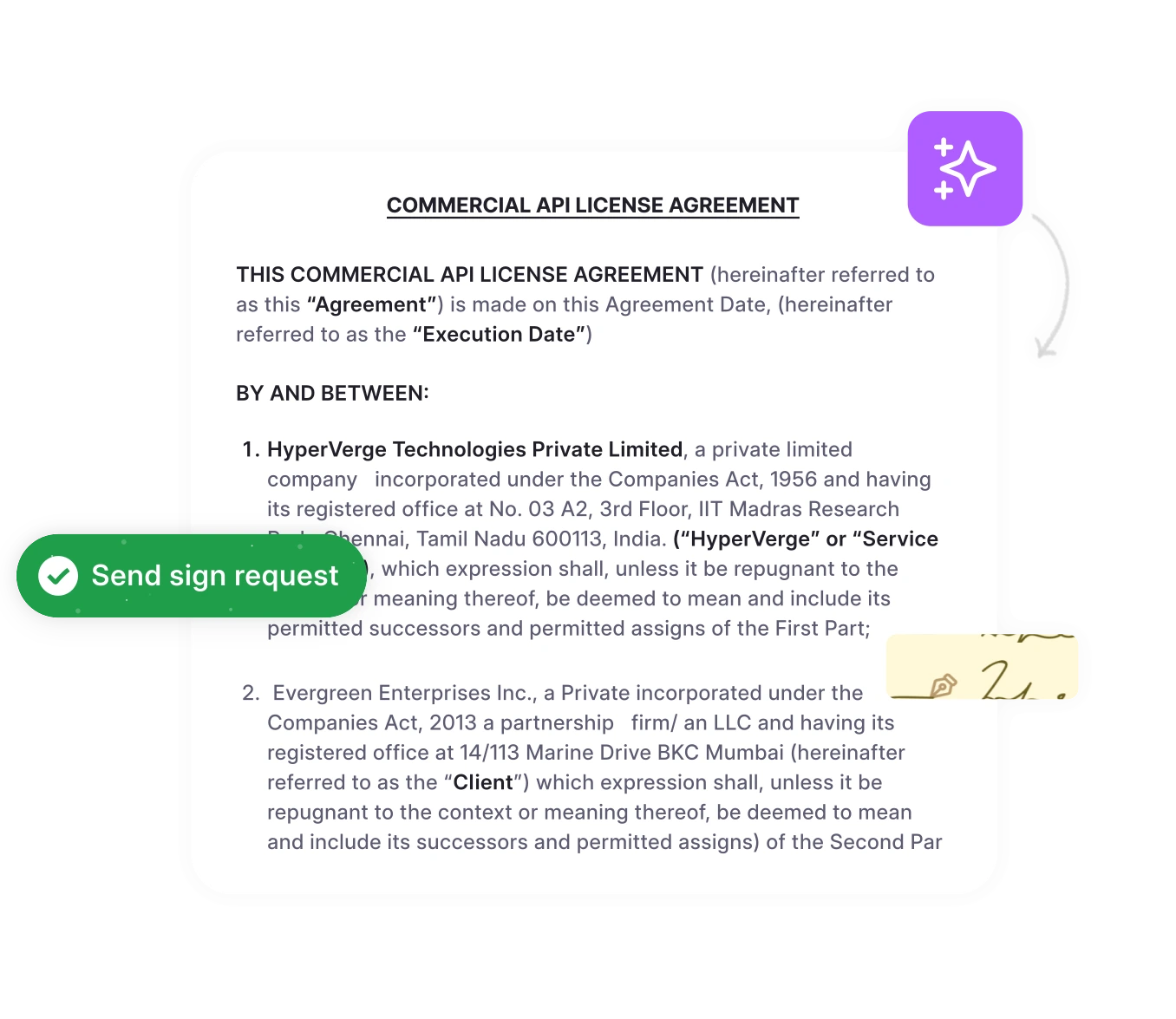Ever spend 45 minutes searching for a contract? And when you do, you spend over an hour locating a single term.
You’re not alone.
- Renewals (55%)
- Deviations from standard terms and conditions (49%)
- Details of SLAs (48%)
- Legal and regulatory requirements (29%)
Managing contracts shouldn’t feel like a scavenger hunt. Yet for many businesses, locating a single renewal date, payment term, or liability clause often means sifting through dozens of pages filled with dense legal jargon.
That’s where a contract summary becomes indispensable.
A contract summary distills a lengthy agreement into a clear and concise document. It highlights the key terms, contract obligations, financial details, and critical clauses, all in an easily digestible format. It enables faster decision-making, improves cross-team visibility, and reduces the risk of missing critical contractual obligations.
This blog focuses on various aspects of contract summaries, exploring their significance, benefits, and best practices. Let’s get started.
What is a contract summary?
A contract summary is a concise document that highlights the key elements of a contract in a clear and easy-to-understand format.
Instead of sifting through dozens of pages of dense legal language, stakeholders can quickly find key information.
- Simplifying complex legal language into plain English
- Highlighting critical terms and obligations for faster decisions
This streamlined overview enables business teams, executives, and legal departments to grasp the essential points of an agreement quickly, supporting faster decision-making, minimizing contract risk, and improving cross-team collaboration.
Now that we understand the role of a contract summary, let’s look at how to create one effectively, step by step.
How to write a contract summary (step-by-step)
Writing a contract summary requires systematic attention to detail to capture the essential elements of the agreement clearly and concisely. Here are six easy steps to writing a clear and compelling contract summary.
Step 1: Read and highlight key metadata
Review the overall contract in detail and take structured notes. Understand the contract’s scope and obligations. Get to know the parties, their rights, and responsibilities. Note key information like payment terms, termination conditions, indemnification, etc.
You can highlight and categorize legal, contractual, operational, and commercial information first. And summarize urgent issues requiring quick stakeholder action.
Step 2: Use simple language and a repeatable format
Avoid legalese and jargon so the summary is understandable to all stakeholders, regardless of their legal expertise. Use clear and concise language to convey the essential points. Your tone must match the expectations of your audience. Use a standard template for your contract summaries so they stay consistent and reliable. Additionally, check for factual or grammatical errors.
Instead of saying “indemnify and hold harmless,” simply say “cover any losses.”
Step 3: Review with the stakeholders
Before you finalize the summary, get the contract summary reviewed by stakeholders. Schedule a meeting so each stakeholder has an opportunity to clarify ambiguities. Ensure the summary accurately reflects the contract’s terms and that no critical elements have been omitted.
Step 4: Share it fresh, don’t sit on it
Send your contract summary when the conversation is still fresh. The goal is to make sure everyone leaves the room with the same understanding and a clear path forward.
Step 4: Store the summary centrally
Lastly, save the contract summary in a centralized, secure contract repository attached to the contract and its addendum documents. This promotes transparency and offers a common reference point for the future.
Use a CLM platform like HyperStart to create, search, and update summaries with AI.
Ditch the manual effort
HyperStart auto-generates structures that are easy to share and review. No extra admin needed.
Book a DemoNext, let’s identify the scenarios in which contract summaries are most useful.
When should you use a contract summary?
A contract summary clarifies objectives, aligns stakeholders, and mitigates potential risks. Here’s when to use contract summaries effectively.
1. When aligning internal teams for approvals
Contract summaries help align internal teams such as legal, finance, and operations. Not everyone has to read the entire document every time. They can focus on details that they can add value to the best. This ensures all departments understand their responsibilities and the contract’s implications.
2. When facilitating counterparty review during negotiations
During contract negotiations, a contract summary provides a clear overview of the essential terms. With this, parties can focus on critical elements without getting bogged down in legal jargon. Additionally, it streamlines the negotiation process without the back and forth.
3. When executives need quick, informed decisions
Executives require bird’s-eye overviews to make informed decisions swiftly. Contract summaries present essential information succinctly for quick decision making.
You may benefit from meeting senior-level stakeholders with a contract summary before you send the contract out the door for approval.
4. When onboarding new stakeholders mid-contract
In case new stakeholders enter the contract midway, contract summaries are great tools for a quick headlines-only understanding. Newcomers can quickly read up on key terms without digging deep.
5. When providing project updates and monitoring progress
Contract summaries provide a quick reference to key obligations, deliverables, and timelines during project reviews or status meetings. This ensures all team members are aligned with contractual commitments and can track progress effectively.
6. When managing distributed teams across locations
Contract summaries offer a centralized and concise overview of agreements for teams operating across different locations and time zones. This facilitates consistent understanding and collaboration, minimizing miscommunication. Additionally, it ensures that all members are informed irrespective of their location.
Once you know when to use a contract summary, the next step is identifying what key information it should contain.
What to include in a contract summary
The specific contents of a contract summary may vary depending on the contract’s nature and the parties’ preferences. Here is a list of key components to include for a comprehensive understanding of your contract:
| Section | Purpose |
|---|---|
| Contract title & reference number | Identify and refer to the contract easily |
| Parties involved | Add critical details of the parties with their names, respective obligations, and contact information |
| Scope of agreement | Define the nature of the agreement, its objectives, deliverables, timelines, and any limitations |
| Term and duration | Mention effective start and end dates, and any renewal or termination provisions |
| Contract value & payment terms | Summarize the financial terms like payment obligations, schedule, invoicing procedures, and any applicable taxes or fees |
| Contract type | Specifies the type of contract, such as Master Service Agreement (MSA) or Service Level Agreement (SLA) |
| Key deliverables or obligations | Clarify the specific responsibilities, duties, and performance standards required of each party under the contract |
| Terms and conditions | Establish the criteria for delivery, acceptance, inspection, and testing of goods or services |
| Governing law & jurisdiction | Make provision for how the contract is interpreted and enforced in courts of law |
| Intellectual property rights | Clarify who owns IP assets, their protection, and identify potential licensing revenue or cost obligations |
| Critical clauses | Outlines clear dispute resolution mechanisms and reduces business disruption |
| Points of contact | Create clear accountability, streamline communication, and reduce contract TAT |
| Comments or special conditions | Highlight non-standard terms and context for unusual contract elements or provisions that need to be handled specially |
While knowing what to include is essential, it’s also important to understand the advantages of using contract summaries.
What are the top 4 benefits of using contract summaries?
Contract summaries make understanding and managing agreements easier by clearly and quickly highlighting the most important information.
“With AI, it’s not about taking work away from lawyers. It’s about using the tech to surface information and gain insight more quickly.”
– Vignesh Kesavan, Global Sales Lead at HyperStart CLM
1. Save time and speed up decision-making
No one is excited about reading a contract every time to establish context. A contract summary offers a concise overview of the most important terms and clauses. It is crucial to quicken your contract review process and allow your teams to focus on more strategic tasks for better productivity and efficiency.
2. Improve internal communication and collaboration
Contract summaries serve as points of communication for all the stakeholders involved in a contract, enabling clear communication. Summaries aid teams in aligning their understanding and working towards a common goal. This results in smooth negotiations, quicker decision-making, and stronger business relationships.
3. Make contracts accessible to non-legal teams
Generally, contracts consist of legal terminology and complex provisions. They offer a clear and concise overview of the key terms and conditions. Stakeholders can understand the entire agreement’s scope, rights, and contractual obligations without legal involvement.
4. Simplify renegotiations and renewals
Contract summaries play an essential role in the process of negotiation and renegotiation. This document provides a framework for initiating fruitful discussions. Additionally, it allows parties to focus on key areas of contention or desired changes. You have all the information at a glance to negotiate a better deal.
Let AI handle the summaries. You handle the strategy.
Auto-generate contract summaries with HyperStart and make faster, smarter decisions.
Book a DemoNow that you know the key benefits, it’s equally important to know common pitfalls when creating contract summaries.
6 common mistakes to avoid while making a contract summary
Creating an accurate and effective contract summary requires careful attention to detail. Avoid these 6 common mistakes so your contract summaries faithfully represent essential terms and support informed decision-making:
Mistake 1: Copy-pasting whole clauses instead of summarizing
Simply re-stating entire contract clauses is not useful. This defeats the purpose of a summary, which is to simplify complex information into clear and concise language.
Best practice: Paraphrase the key points of each clause in simple language. Focusing on the spotlight terms and obligations. This makes the summary more readable to stakeholders without legal expertise.
Mistake 2: Using a generic off-the-shelf template
Not all contract types are the same. Each serves a purpose and has unique requirements. A one-size-fits-all contract summary template may omit essential information for specific cases.
Best practice: Customize your summary template to fit the specific contract type and industry. Includes sections pertinent to the agreement.
For instance, a SaaS agreement may contain uptime guarantees and data handling clauses, while a manufacturing contract may specify quality standards and inspection rights.
Mistake 3: Skipping critical details
Leaving out details like auto-renewal terms, penalties, or specific obligations can quickly spiral into misunderstandings and non-compliance.
Best practice: Thoroughly review and communicate clearly to stakeholders about who is involved and who owes what. Highlight clauses that have legal, contractual, operational, and commercial implications for the parties involved.
Mistake 4: Using complex legal language
Using complex legal or technical language makes the job more complex than necessary. This may further drive up contract turnaround times and call for unnecessary legal involvement.
Best practice: Write summaries in plain language. Keep it informal for operational and financial aspects. Keep it formal and simple for legal and contractual implications. Either way, use language that everyone can understand.
Mistake 5: Formatting inconsistently across contract summary templates
Using inconsistent fonts, headings, or formats within the contract and across the portfolio is not a good practice. This makes it difficult to read, understand, and act upon them.
Best practice: Use a consistent and professional format throughout the summary and across your contracts. Employ clear headings, bullet points, and spacing to enhance readability.
Mistake 6: Implementing a CLM tool that require advanced IT skills
Not all CLM technologies are designed for simplicity. Many require direct, human, tech, and opportunity costs to get up and running smoothly. They may also need IT skills to update metadata and workflows as the business evolves, increasing turnaround times and making them inflexible to work with.
Best practice: Shopping for a CLM is like shopping for a home. CLM platforms are most useful when designed for legal and org-wide professionals, not technologists. Make sure you pick one that is designed with a user-friendly interface for quick adoption across legal and non-legal users alike. It must integrate seamlessly with existing tools to centralize contract data and workflows for streamlined collaboration across departments.
Next, let’s look at the core challenges you might face while making contract summaries manually.
5 Challenges of creating contract summaries manually
Manually summarizing contracts presents significant challenges in accuracy, consistency, and productivity. Here are the top 5.
1. Time-consuming
Creating summaries requires you to read lengthy documents with complex legal language, understand key provisions, and articulate them concisely. It can be pretty challenging to summarize contracts with numerous clauses manually.
2. Prone to human errors and omissions
Manual processes and human errors go hand in hand, irrespective of the nature of the work or industry. Manually-made contract summaries are prone to misinterpretation and errors of omission. This can jeopardize the purpose.
3. Inconsistent quality
Without benchmark guidelines, multiple individuals summarizing contracts can be chaotic. Inconsistencies make summaries difficult to compare, understand, and act upon.
4. Difficult to scale
High contract volumes can make manual summaries difficult to create and sustain. It perpetuates inefficiencies and bottlenecks.
5. Labor-intensive
Long-term contracts frequently undergo amendments, revisions, or contract renewals. It is tedious and labor-intensive to manually update summaries.
While manual contract summarization poses several challenges, let’s see how CLM platforms can streamline and simplify this process efficiently.
How CLM platforms help manage contract summaries
CLM platforms can rapidly summarize complex information to empower in-house counsel to understand context and set strategy from the outset. Here are five ways CLM platforms help manage contract summaries.
1. Create standardized summaries using templates
CLM platforms help benchmark templates for consistent summaries. This standardization saves time, minimizes errors, and accelerates contract reviews.
Why it matters: Standard templates maintain quality across different users and contract types, even at scale.
2. Auto-extract metadata like dates, values, and renewal clauses
Advanced CLM systems use AI to automatically extract and populate essential contract data such as effective dates, financial terms, and specific clauses. This contract automation minimizes manual entry errors and speeds up summary creation.
Why it matters: Saves legal teams from manually combing through every page. Catching critical clauses.
3. Set up approval workflows for legal review
Built-in approval workflows route summaries through the necessary review channels. Legal teams can efficiently review and approve summaries before finalization. This structured process enhances contract compliance and accountability.
Platforms like HyperStart offer no-code approval workflow builders, enabling teams to set up customized approval processes quickly, reducing turnaround times and minimizing business risks.
Why it matters: Business teams can draft faster. Legal teams still stay in control. Nothing risky goes unchecked.
4. Maintain complete version control and audit trails
Maintaining a clear record of changes is crucial. CLM platforms provide version control features that track edits over time and audit trails that log user actions. This ensures transparency and traceability throughout the summary’s lifecycle.
Why it matters: You always know who edited what and when — critical during audits, disputes, or contract renewals.
5. Search and retrieve summaries instantly
Quick access to specific contract information is vital. CLM platforms enable users to search across contract summaries using keywords or filters. This allows for instant retrieval of contracts containing specific clauses, like indemnity terms.
HyperStart’s centralized contract repository, powered by AI filters for quick contract retrieval.
Why it matters: Saves time, improves compliance tracking, and speeds up decision-making.
Modern CLM platforms turn contract summaries from tedious admin tasks into business assets. HyperStart, for example, lets you summarize and redline contracts with AI based on your precedent language. No more letting work get in the way of work.
Fast-track reviews with AI summaries
Align stakeholders quickly with AI-aggregated summaries from your contracts. Optimize contract intelligence for smarter decision-making.
Book a DemoFrequently asked questions
- Summize is known for creating quick AI-generated summaries and integrates with collaboration platforms.
- Hyperstart offers a clean, centralized workspace to extract, store, and share contract summaries, perfect for audits, reviews, and cross-functional visibility.
- ConvergePoint AI provides customizable summaries that highlight key terms and obligations for fast legal reviews.












